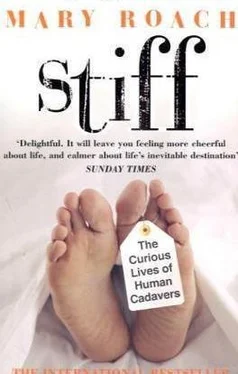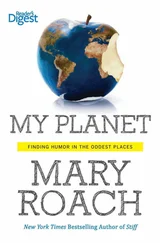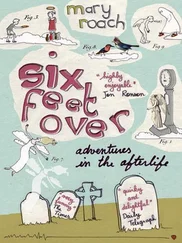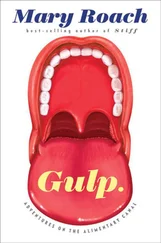Which was also, up until 1965, not a crime in any U.S. state. When necrophilia’s best-known modern-day practitioner, Sacramento mortuary worker Karen Greenlee, was caught absconding with a dead young man in 1979, she was fined for illegally driving a hearse but not for the act itself, as California had no statutes regarding sex with the dead. To date, only sixteen states have enacted necrophilia laws. The language used by each state reflects its particular character. While taciturn Minnesota refers to those who “carnally know a dead body,” freewheeling Nevada spells it all out: “It is a felony to engage in cunnilingus, fellatio, or any intrusion of any part of a person’s body, or any object manipulated or inserted by a person into the genital or anal openings of the body of another where the offender performs these acts on the dead body of a human being.”
How could people of the nineteenth century have allowed teeth from cadavers to be put into their mouths? The same way people from the twenty-first century can allow tissue from cadavers to be injected into their faces to fill wrinkles. They possibly didn’t know and probably didn’t care.
With the help of an interpreter, I got the number of an Oscar Rafael Hernandez living in Barranquilla. A woman answered the phone and said that Oscar was not in, whereupon my interpreter gamely asked her if Oscar was a garbage picker, and if he had been almost murdered by thugs who wanted to sell him to a medical school for dissection. A barrage of agitated Spanish ensued, which my interpreter summed up: “It’s the wrong Oscar Rafael Hernandez.”
Sheena Jones, the secretary at the college who told me about the wallet—which she called a “pocket book,” nearly leading me to write that ladies’ handbags had been made from Burke’s hide—said it had been donated by one George Chiene, now deceased. Mrs. Jones did not know who had made or originally owned the wallet or whether Mr. Chiene had ever kept his money in it, but she observed that it looked like any other brown leather wallet and that “you would not know it is made from human skin.”
Purists among them insist on the real deal. I spent an afternoon in an abandoned dormitory at Moffett Air Force Base, watching one such woman, Shirley Hammond, put her canine noses through their paces.
Hammond is a fixture on the base, regularly seen walking to and from her car with a pink gym bag and a plastic cooler. If you were to ask her what she’s got in there, and she chose to answer you honestly, the answer would go more or less like this: a bloody shirt, dirt from beneath a decomposed corpse, human tissue buried in a chunk of cement, a piece of cloth rubbed on cadavers, a human molar. No synthetics for Shirley’s dogs.
And, alas, most expensive and least well attended. In May 2002, a year after I visited, it closed its doors.
But by no means the first to attempt to keep bodies from rotting.
Outtakes of the early days of corporeal preservation included a seventeenth-century Italian physician named Girolamo Segato, who devised a way of turning bodies into stone, and a London M.D. named Thomas Marshall, who, in 1839, published a paper describing an embalming technique that entailed generously puncturing the surface of the body with scissors and then brushing the body with vinegar, much the way the Adolph’s company would have housewives prick steaks to get the meat tenderizer way down in.
Does everything have a father? Apparently so. A web search on “the father of” turned up fathers for vasectomy reversal, hillbilly jazz, lichenology, snowmobiling, modern librarianship, Japanese whiskey, hypnosis, Pakistan, natural hair care products, the lobotomy, women’s boxing, Modern Option Pricing Theory, the swamp buggy, Pennsylvania ornithology, Wisconsin bluegrass, tornado research, Fen-Phen, modern dairying, Canada’s permissive society, black power, and the yellow schoolbus.
Other lively things to do with X-ray video cameras: At Cornell University, biomechanics researcher Diane Kelley has filmed lab rats mating in X-ray, in order to shed light on the possible role of the penis bone. Humans do not have penis bones, nor have they, to the author’s knowledge, been captured having sex on X-ray videotape. They have, however, been filmed having sex inside an MRI tube, by fun-loving physiologists at the University Hospital in Groningen, Netherlands. The researchers concluded that during intercourse in the missionary position, the penis “has the shape of a boomerang.”
From a safety standpoint, it would have been better to skip steering wheels entirely and install a pair of rudderlike handles on either side of the driver’s seat, as was done in the “Survival Car,” a traveling demo car built by the Liberty Mutual Insurance Company in the early 1960s to show the world how to build cars that save lives (and reduce insurance company payouts). Other visionary design elements included a rear-facing front passenger seat, a feature about as likely to sell cars as, well, steering rudders. Safety did not sell automobiles in the sixties, style did, and the Survival Car failed to change the world.
This is why you shouldn’t worry all that much about sitting in the middle seat, without a shoulder belt. If the car gets hit from the side, you’re better off being farther from the doors. The kindly people beside you, the ones with the shoulder belts, will absorb the impact for you.
To quote a Stapp Car Crash Conference study on the topic, “Pedestrians are not ‘run over’ by cars. They are ‘run under.’” It typically goes like this: Bumper hits calf and front of hood hits hip, knocking the legs out from under and flipping them up over the head. The cartwheeling pedestrian then lands on his head or chest on the hood or windshield. Depending on the speed of the impact, he may continue cartwheeling, legs over head again, and land flat on the roof, and from there slide off onto the pavement. Or he may remain on the hood, with his head smashed through the windshield. Whereupon the driver calls an ambulance, unless the driver is someone like Fort Worth nurse’s aide Chante Mallard, in which case she keeps on driving, returns to her house, and allegedly leaves the car in the garage with the victim sticking out of her windshield until he bleeds to death. This event took place in October 2001. Mallard was arrested and charged with murder.
As fans of the eating sections of old Guinness books of world records will surmise, this figure has been surpassed on numerous occasions.
Some stomachs, by way of heredity or prolonged daily gourmandism, are roomier than average. Orson Welles’s was one such stomach. According to the owners of Pink’s hot dog stand in L.A., the voluminous director once sat down and finished off eighteen franks.
The all-time record holder would appear to be a twenty-three-year-old London fashion model whose case was described in the April 1985 Lancet .
At what turned out to be her last meal, the young woman managed to put away nineteen pounds of food: one pound of liver, two pounds of kidney, a half pound of steak, one pound of cheese, two eggs, two thick slices of bread, one cauliflower, ten peaches, four pears, two apples, four bananas, two pounds each of plums, carrots, and grapes, and two glasses of milk. Whereupon her stomach blew and she died. (The human gastrointestinal tract is home to trillions of bacteria, which, should they escape the confines of their stinky, labyrinthine home, create a massive and often fatal systemic infection.)
Читать дальше












